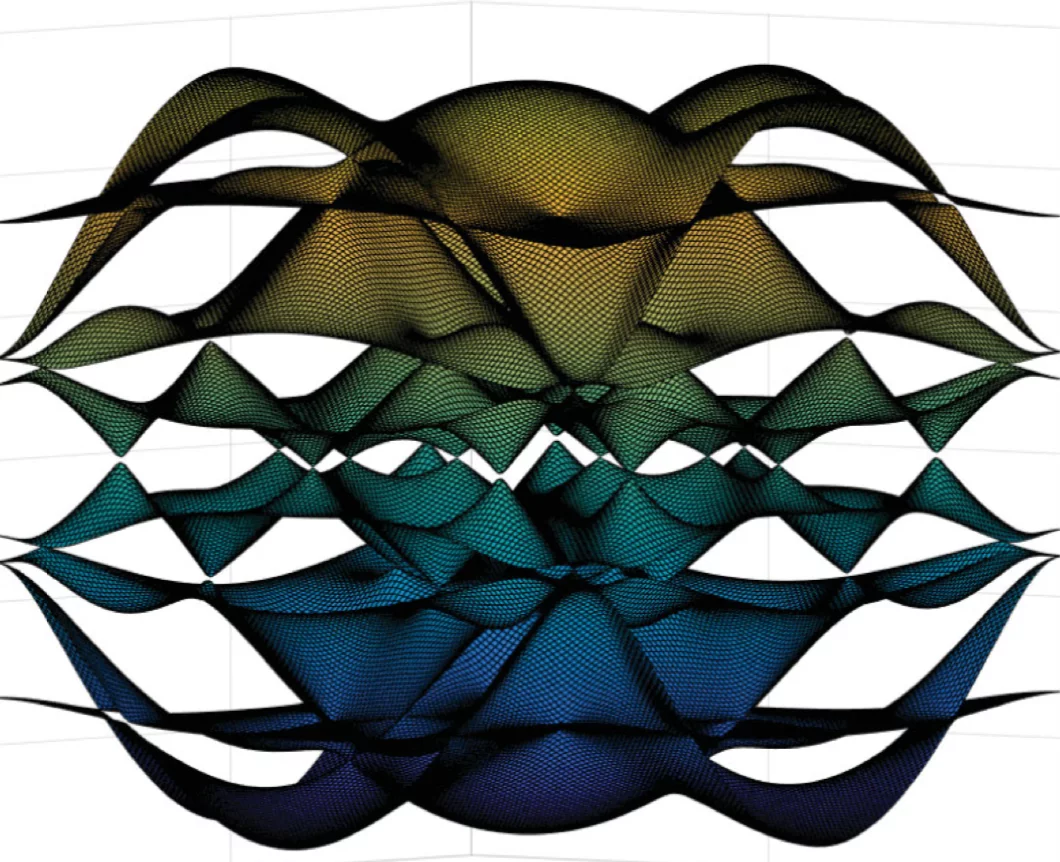A study of the extended Kitaev model on the honeycomb lattice that factors in Kitaev, Heisenberg and off-diagonal symmetric interactions provides both a definitive answer on proximate Kitaev states and an essential guide to the physics of candidate Kitaev materials.
'Kitaev physics' has captured the attention of a large segment of the quantum magnetism community. Kitaev's honeycomb-lattice spin model contains not only exact gapped and gapless quantum spin-liquid (QSL) states but also the '16-fold way' classification of Z2 QSLs in an applied magnetic field. Kitaev-type interactions (denoted K) can arise in magnetic materials containing 4d and 5d transition-metal ions, although in general these also possess Heisenberg (J) and off-diagonal symmetric (Γ) interactions. Such 'proximate Kitaev' materials and models have led to claims, based on numerical studies of small systems, of Kitaev-related QSL physics over a wide range of K, J and Γ parameters.
Now PSI theorist Bruce Normand, working with Jiucai Wang and Zheng-Xin Liu at Renmin University of China in Beijing, has provided the definitive answer on proximate Kitaev states. Using their previously developed slave-particle technique and variational Monte Carlo calculations, the researchers mapped the complete quantum (spin-1/2) K–J–Γ phase diagram. In addition to quantifying the region of 'generic' gapless Kitaev behaviour (the KSL phase), they demonstrated that there is just one proximate KSL (PKSL); the remainder of the phase diagram contains only different magnetically ordered states.
This PKSL is a gapless Z2 QSL whose exotic quasiparticle dispersion has 14 Majorana cones. These quasiparticles are fully mixed superpositions of the KSL Majoranas and, unlike the generic KSL, the PKSL has a gapless spin response. In a c-axis magnetic field, the ground state becomes a gapped chiral spin liquid (CSL) with Chern number 5 and non-Abelian anyons. Increasing field strength produces successive transitions to a CSL with Chern number 4 and Abelian anyons, then to a topologically trivial state. These two CSLs, which would exhibit respectively half-integer- and integer-quantised thermal Hall effects, are the first realisations in a materials-relevant lattice model of their topological classes within Kitaev's 16-fold way.
Contact
Dr. Bruce Normand
Paul Scherrer Institute, 5232 Villigen PSI, Switzerland
Phone: +41 56 310 2297, e-mail: bruce.normand@psi.ch
Original Publication
1. One proximate Kitaev spin liquid in the K−J−Γ model on the honeycomb lattice
Jiucai Wang, Bruce Normand, Zheng-Xin Liu
Physical Review Letters, 123: 197201 (2019).
DOI: 10.1103/PhysRevLett.123.197201



